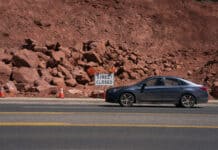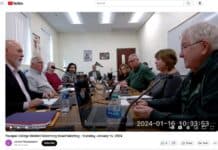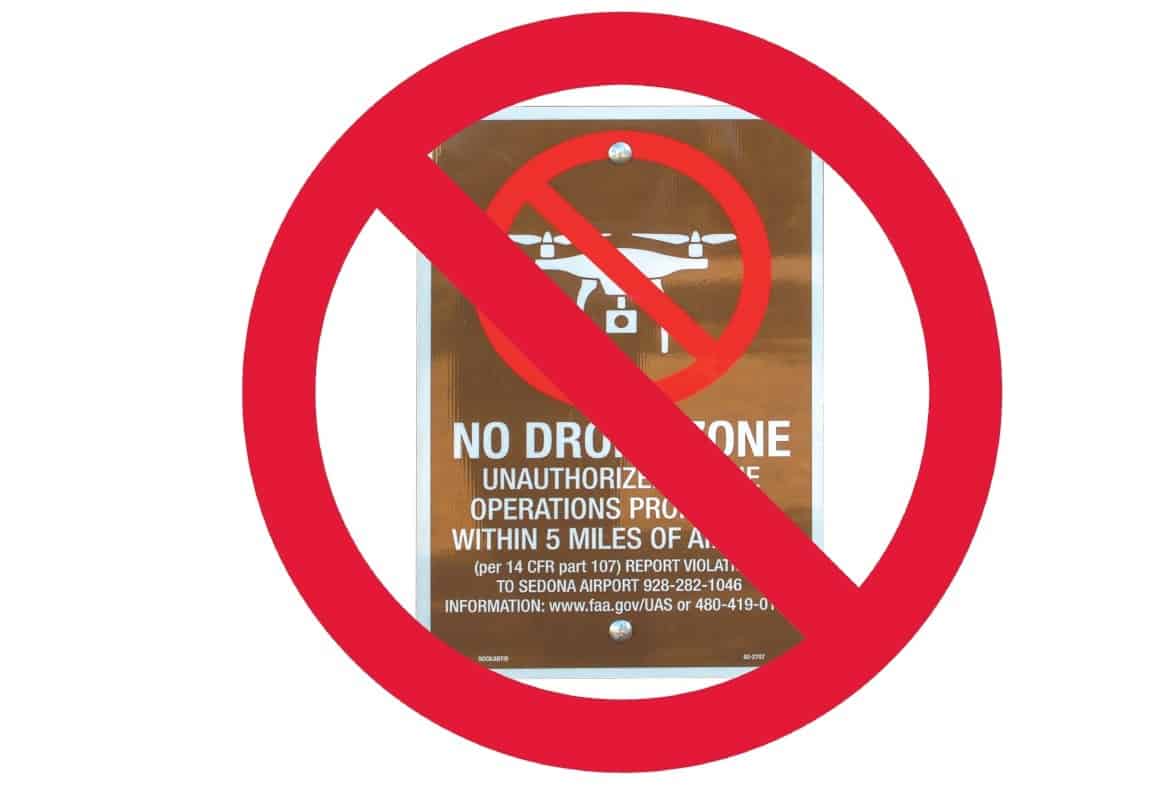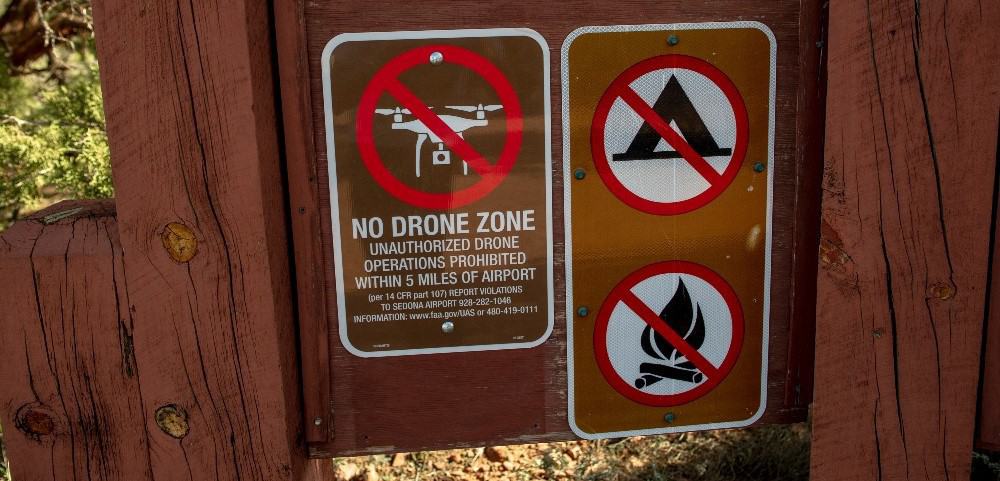Last week, we reported that the “no drone zone” signs that dot trailheads around the Sedona area improperly cited a federal law that does not apply and attempt to impose restrictions on people who fly drones within 5 miles of the Sedona Airport.
In fact, there is no such “zone” and under federal law, pilots can fly their drone aircraft almost anywhere in the Sedona area, regardless of how close they are to the airport.
Drones are still prohibited from flying in the flight path of aircraft or over the helipad at the Sedona campus of Verde Valley Medical Center in West Sedona, and prohibited from taking off, landing or crashing in either the Red Rock Secret Mountain Wilderness Area north of Sedona or the Munds Mountain Wilderness Area east of the city, but not from flying over them.
Other than that, according to the Federal Aviation Administration, drones can fly unrestricted in Sedona’s Class G airspace, which extends from the ground up to 700 feet above. Under federal law, recreational drones can fly up to 400 feet.
Since our story about the “no drone signs” ran, we have received word from the U.S. Forest Service that the signs will be removed.
USFS staff did not seek out a ban on drones and place the signs of their own volition, but instead placed the signs only after being asked to do so by the Sedona Oak Creek Airport Authority, who misinformed the USFS that it had the legal authority to impose a ban on drone flights within 5 miles of the airport.
The airport did not have that authority then, nor does it now. Only the FAA has the right and legal power to limit use of public airspace.
We applaud the staff of the Red Rock Ranger District of the Coconino National Forest for moving swiftly to remove the “no drone signs.” They, too, were misinformed by the Sedona Oak Creek Airport Authority and are quickly acting to rectify the falsehood they were lead to believe.
Whether the signs banned drones, or limited the use of iPod headphones or the eating of bologna sandwiches on public land is immaterial — what does matter is that the Sedona Airport’s signs intentionally misled the public about what they can or cannot do on public land and in public airspace and attempted to misinform the public about what federal law clearly states.
This should outrage any American citizen. No government, nor any authority given governmental powers, should ever overstep its bounds, misinform the public nor mislead another government agency about what federal law states.
Also in reporter Reed Perry’s story was a claim from the airport that a Sedona plane struck a drone in February 2017. Perry reported that the FAA investigation found no evidence of a collision.
Sedona Airport Manager Deborah Abingdon’s failure to provide Perry or this newspaper the date of the alleged incident, the FAA incident report number, the name of the pilot or the type of aircraft suggests this “collision” never occurred and someone at the airport made it up to seemingly justify to “no drone zone.”
That being said, even if such a collision did occur, even a catastrophic one, the airport still would not have any authority to ban drones. That still remains solely with the FAA, not local airport administrators, as FAA Pacific Division Communications Manager Ian Gregor told us.
Since the story and subsequent editorial ran calling the alleged collision an outright falsehood, we have heard nothing from Abingdon, nor the Sedona Airport nor any pilot to dispute our reporting.
In fact, we have heard nothing at all from Abingdon nor the airport to dispute any part of the story nor the subsequent editorial.
We have, however, heard from dozens of drone pilots who thanked us for revealing the airport’s untruth, and plan on flying their drones in the Sedona area in the weeks and years ahead. Most drone pilots are respectful of other trail users and residents and want to use their technology safely and legally. They just want to fly in Sedona’s airspace, as federal law allows them to do, and share their videos of our region with the world.
Christopher Fox Graham
Managing Editor




















